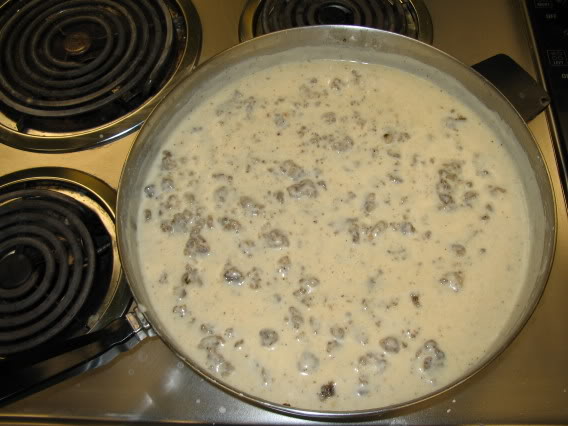Mylegsbig
Head Chef
Guys my girl has been trying to make me country gravy for a biscuits & gravy breakfast and twice in a row it has gotten lumpy and ruined and is really starting to piss me off. here is recipe for it.
also - shouldnt this recipe have butter in it to make a roux with the flour?
please help.
One 12-ounce tube bulk pork sausage
2 tablespoons all-purpose flour
2 cups milk
Freshly ground black pepper, to taste
Baking Powder Biscuits, recipe follows Heat a large cast-iron skillet over medium-high heat. Add the sausage, break it up with a wooden spoon, and cook, stirring occasionally, until well browned and cooked through, about 7 minutes.
Using a slotted spoon, transfer the sausage to a bowl, leaving the rendered fat in the skillet. Whisk the flour into the fat and cook, stirring, for about 1 minute. While whisking, pour the milk into the skillet and bring the gravy to a boil. Lower the heat and simmer gently for 2 minutes. Stir in the sausage and season with pepper. Split the biscuits in half and divide them among plates. Top each biscuit with some of the gravy and serve immediately.
also - shouldnt this recipe have butter in it to make a roux with the flour?
please help.
One 12-ounce tube bulk pork sausage
2 tablespoons all-purpose flour
2 cups milk
Freshly ground black pepper, to taste
Baking Powder Biscuits, recipe follows Heat a large cast-iron skillet over medium-high heat. Add the sausage, break it up with a wooden spoon, and cook, stirring occasionally, until well browned and cooked through, about 7 minutes.
Using a slotted spoon, transfer the sausage to a bowl, leaving the rendered fat in the skillet. Whisk the flour into the fat and cook, stirring, for about 1 minute. While whisking, pour the milk into the skillet and bring the gravy to a boil. Lower the heat and simmer gently for 2 minutes. Stir in the sausage and season with pepper. Split the biscuits in half and divide them among plates. Top each biscuit with some of the gravy and serve immediately.
Last edited:


